Distance Learning Art Class, March 2020 Art Blog
Shelter-in-Place
When Life Gives You Lemons Make Art
I felt the need to share with my community simple art lessons for adults and kids with materials they might have at home in their kitchens and home offices. I was doing this on my own not as a school related activity. I have received lots of positive feedback and requests to open these classes for the entire school community and beyond. For the duration of the school closure I am planning to live-steam visual arts classes on Facebook every Tuesday and Thursday at 10:00 am PST. If you would like to tune in to my live-streams you may follow me on Facebook and Instagram @Barbara Libby-Steinmann. It takes lots of courage to brave the live-steam and virtual teaching world. The learning curve is high and frustrating at times. In a sense, this has become my own personal professional development from home. If you are not a Facebook user here are the links to see the art classes on youtube. In order not miss out on future videos I will be posting you may subscribe to the Community ArtsKitchen Youtube channel https://www.youtube.com/channel/UCr6DkqHebijF2XCKOrURd1w
Community ArtsKitchen: Make red cabbage dye to create gorgeous blue eggs
Happy Spring Break 🌱🌷🌸
Here is a fun family friendly activity Anna and I have put together for you: Dyeing Eggs with Onionskins. Watch on YouTube and subscribe. This egg decorating technique has been a tradition in my family for generations. Perhaps it will become a spring tradition in your family as well.
Community ArtsKitchen: Make red cabbage dye to create gorgeous blue eggs
In this Community ArtsKitchen video you'll learn how to turn red cabbage into a dye that turns white eggs blue. This simple set of instructions also includes how to create a design on the egg by using a resist to keep areas of the egg while. And it shows a more advanced method of getting a print of a plant on the egg as well.https://youtu.be/ZHxjTOMQUGA
Community ArtsKitchen Ephemeral Art: Creating Kindness Sculptures
Materials: collect natural items from nature, or collect items in your home, i-phone/-i-pad camerahttps://youtu.be/YTjowxiwavU
Community ArtsKitchen Part 1: Painting Flowers with Coffee
Painting flowers with coffee
Materials: instant coffee, paintbrush or Q-tips, water and containers, paper, paper towels
https://youtu.be/1P6yEEDK4PsCommunity ArtKitchen Part 2: Line Drawing Techniques to embellish coffee paintings
Line Drawing techniques to embellish coffee paintings
Materials: ballpoint pen, fine sharpi, color pencils, paper
Materials: ballpoint pen, fine sharpi, color pencils, paper
Community ArtKichen Part 3: Zentangles
Materials: fine sharpie pen, pencil, paper, ruler, paper
https://youtu.be/yB5i3e2Ew6A
Community ArtKitchen Part 4: Printmaking
Learn how to print/ stamp with veggies. Print a card and a piece of stationary with matching envelope. Materials: small potato, onion, cutting board, knife, paper towel, markers, copy paper and constuction paper
https://youtu.be/pLATOxBfWUU
Maker Shaker Project
https://youtu.be/Color Wheel Object Challenge
Create a color wheel with found objects
Below please find projects my TK-4th grade students were working on before school closed.
Transitional Kindergarten: Snail Line Drawing
TK Students were introduced to the works of Saul Steinberg. Steinber (1914-1999) was a Romanian and American cartoonist and illustrator, best known for his work for The New Yorker. He described himself as a "writer who draws".
Drawing is one of the most important activities for students to practice and it is best to start the practice at a young age. Drawing not only provides the basis for other creative activities- like painting, sculpture and printmaking- but it also provides a direct link with reading, writing and especially mathematics. Drawing is the single most accessible form of art available.
TK students used a felt-tip pen to draw a variety of lines to create an imaginary snail. Students drew a spiral shell into which the snail can withdraw its whole body. Students imagined other creatures living with the snail and drew houses for the "snail's friends" on top and around the spiral shell. The story telling began and an entire snail community was created!
Kindergarten: Upcycled Cans- to Robots
The Zero Waste Schools Program inspired this amazing robot project. Recycling makes sense unlike landfills (which simply stockpile trash) recycling removes waste completely, then turns it back to useful products. Recycling saves money, and in turn reduces the amount of trash going to the landfills.
ALUMINUM RECYCLING
Recycling one ton of aluminum:
Saves 14,000 kWh of energy
Saves 39.6 barrels (1,663 gallons) of oil
Saves 237.6 million Btu's of energy
Saves 10 cubic yards of landfill space
The Zero Waste program is a school wide program which teaches students that tin and aluminum cans should not go in the regular trash. Students learned that new products can be made out of the recycled aluminum, or we can upcycle the cans and create amazing art. No need to go to the art store to purchase supplies! From Trash to Treasure!
Kindergarten students were introduced to the basic cylindrical form of a can and faced the design challenge to build a stable, artistic looking robot, adding additional recycled items such as: plastic cups, miscellaneous parts, Lego's, bottle caps, corks etc. Students imagined what kind of tasks their robots could do and they cam up with creative names for their whimsical friends built out of cans.
Once the looms they were completed students were ready to take on the weaving challenge. Weaving helps develop hand-eye coordination because the activity encourages children to use the visual information received to coordinate the movement of the hands. It isn't an easy task when starting out but with practice and perseverance students made great progress. It is a common sight to see children really concentrate when they weave. There is often silence as they carefully move the material between the warp. Weaving is a soothing and calming activity.
 Students were introduced to fiber artist Emily Dvorin. Emily Dvorin is a self-taught, award-winning fiber artist. She grew up in New Jersey in the 50s. Her specialty is upcycling materials and weaving them into one of a kind pieces of art.
Students were introduced to fiber artist Emily Dvorin. Emily Dvorin is a self-taught, award-winning fiber artist. She grew up in New Jersey in the 50s. Her specialty is upcycling materials and weaving them into one of a kind pieces of art.
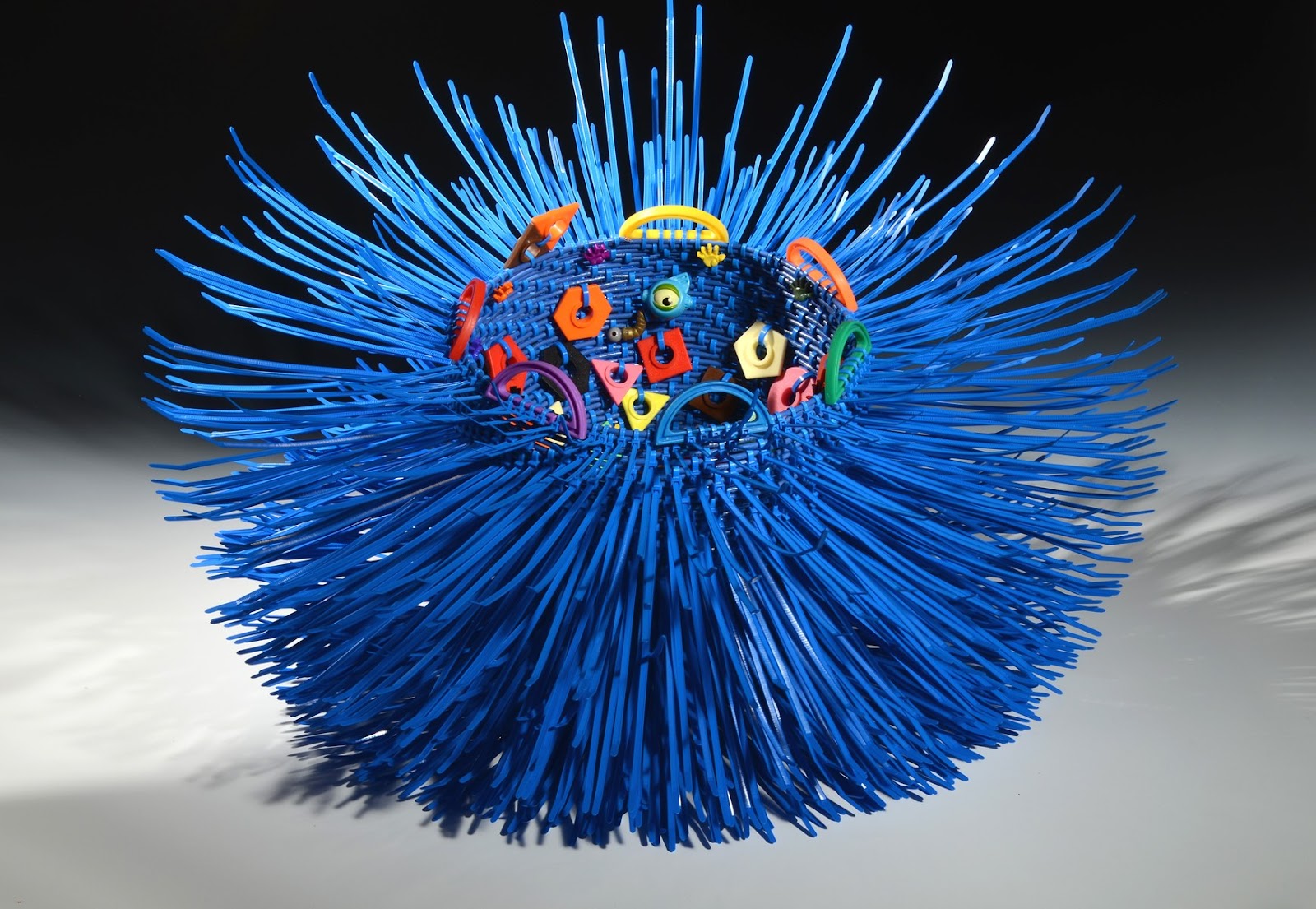
To complete their baskets students explored a variety of innovative rim and handle finishes. Students presented their finished baskets to their classmates and shared what they are planning to use their baskets for.
Drawing is one of the most important activities for students to practice and it is best to start the practice at a young age. Drawing not only provides the basis for other creative activities- like painting, sculpture and printmaking- but it also provides a direct link with reading, writing and especially mathematics. Drawing is the single most accessible form of art available.
TK students used a felt-tip pen to draw a variety of lines to create an imaginary snail. Students drew a spiral shell into which the snail can withdraw its whole body. Students imagined other creatures living with the snail and drew houses for the "snail's friends" on top and around the spiral shell. The story telling began and an entire snail community was created!
Kindergarten: Upcycled Cans- to Robots
The Zero Waste Schools Program inspired this amazing robot project. Recycling makes sense unlike landfills (which simply stockpile trash) recycling removes waste completely, then turns it back to useful products. Recycling saves money, and in turn reduces the amount of trash going to the landfills.
ALUMINUM RECYCLING
Recycling one ton of aluminum:
Saves 14,000 kWh of energy
Saves 39.6 barrels (1,663 gallons) of oil
Saves 237.6 million Btu's of energy
Saves 10 cubic yards of landfill space
The Zero Waste program is a school wide program which teaches students that tin and aluminum cans should not go in the regular trash. Students learned that new products can be made out of the recycled aluminum, or we can upcycle the cans and create amazing art. No need to go to the art store to purchase supplies! From Trash to Treasure!
What is upcycling?
Upcycling also known as creative reuse. It is the process of converting old or discarded materials into something useful, artistic and beautiful.
Are Recycling and Upcycling the same?
Actually no, and the difference is important. Upcycling is what many artists do. Reusing waste without destroying it in order to form something new. Recycling takes waste products, breaks them down, then forms them into something new. Both upcycling and recycling are great methods to keep products and packaging out of landfills and helps our planet earth.
Kindergarten students were introduced to the basic cylindrical form of a can and faced the design challenge to build a stable, artistic looking robot, adding additional recycled items such as: plastic cups, miscellaneous parts, Lego's, bottle caps, corks etc. Students imagined what kind of tasks their robots could do and they cam up with creative names for their whimsical friends built out of cans.
1st Grade: Creekside Marsh, Drawing Local Birds
Project Based Learning and Art Integrations are approaches to teaching in which students construct and demonstrate understanding through an art form. Students engage in a creative process, which connects an art form and another subject area, and meets evolving objectives in both.
The "drawing local birds" lesson connects with the first grade PBL driving question: "Why should we care about Creekside marsh?" First grade students went on nature walks to observe animals which inhabit the Creekside marsh area. Students observed, charted, and identified birds. In art class students were introduced to David Allen Sibley, American Ornithologist, as well as Scientific Illustrator Jane Kim.
During a directed sketching lesson students were guided through a series of sketching check-points, to capture the position and gesture of a bird and its distinctive features, such as, beak, legs, tail and wing feathers. After the intro sketching lesson, students chose a photograph of a marsh bird to illustrate. Students carefully followed the sketching check-points, and closely observed the bird's gesture, features and markings. Students used watercolor pencils and aqua brushes to apply delicate color and details.
2nd GRADE: Weaving on Handmade Loom
Weaving: an ancient process.
Did you know that one of the processes used to make cloth and clothing is thousands of years old? The tradition of weaving traces back to Neolithic times - approximately 12,000 years ago. Even before the actual process of weaving was discovered, the basic principle of weaving was applied to interlace branches and twigs to create fences, shelters for protection.
When you're weaving cloth, you use two sets of threads, called the warp and the weft. The warp threads run vertically, or up-and-down, and the weft threads run horizontally, or from side-to-side. To weave, you move the weft threads over and under the warp threads, which creates fabric, like that used to make clothing. Weaving is also used to create baskets, mats, and other items from materials such as willow branches, twigs, and grasses.
A loom is a device used to weave cloth and tapestry. The basic purpose of any loom is to hold the warp threads under temsion to facilitate the interweaving of the weft threads. The precise shape of the loom and its mechanics may vary, but the basic function is the same.
Did you know that one of the processes used to make cloth and clothing is thousands of years old? The tradition of weaving traces back to Neolithic times - approximately 12,000 years ago. Even before the actual process of weaving was discovered, the basic principle of weaving was applied to interlace branches and twigs to create fences, shelters for protection.
When you're weaving cloth, you use two sets of threads, called the warp and the weft. The warp threads run vertically, or up-and-down, and the weft threads run horizontally, or from side-to-side. To weave, you move the weft threads over and under the warp threads, which creates fabric, like that used to make clothing. Weaving is also used to create baskets, mats, and other items from materials such as willow branches, twigs, and grasses.
A loom is a device used to weave cloth and tapestry. The basic purpose of any loom is to hold the warp threads under temsion to facilitate the interweaving of the weft threads. The precise shape of the loom and its mechanics may vary, but the basic function is the same.
Our apple tree needed pruning, instead of composting the cut branches students used them to build weaving looms. Students laid out 4 branches to create a frame. Students learned how to tie square knots to secure the corners of the loom. Students used a soft, neutral brown cotton thread to stretch around the branch frame to crate the vertical warp.
3rd GRADE: Miwok inspired Basket Weaving
Third grade students continued and completed the weaving of their California Miwok inspired baskets. Students used round willow reed to twine the sides of their baskets and added color accents by incorporating beads into their weaving
Inspired by Emily Dvorin's work, some students include upcycled materials such as nylon laniards to their baskets.
To complete their baskets students explored a variety of innovative rim and handle finishes. Students presented their finished baskets to their classmates and shared what they are planning to use their baskets for.
4th GRADE: Keith Haring Kindness Posters
To promote love and kindness in the world, 4th grade students designed and painted impressive, bright colored, posters inspired by the Pop artist Keith Haring.
Students were introduced to the works of Pop artist Keith Haring. Haring (1958-1990) was famous in the 1980s for his often large scale art, which was a mixture of graffiti and pop art. He used bright colors and simplistic, cartoon like images, expressing his social, emotional, and political views.
Students were introduced to the works of Pop artist Keith Haring. Haring (1958-1990) was famous in the 1980s for his often large scale art, which was a mixture of graffiti and pop art. He used bright colors and simplistic, cartoon like images, expressing his social, emotional, and political views.
Students recorded important facts about Haring in their art journals and viewed samples of this work. Focusing on Haring's iconic imagery students analyzed a few samples of his works and used "his clues" (color, symbols, and motion marks) to identify, and guess Haring's message to the viewer.
Students sketched ideas to express a message or thought to promote love, kindness, acceptance, peace, equality etc. in a Keith Haring style. Students presented their ideas in small groups and gave each other feedback. Students used pop art techniques such as simple figures, motion lines, and bright colors to express their ideas and to communicate their views.
Can you guess the students' message/idea/story they are communicating?
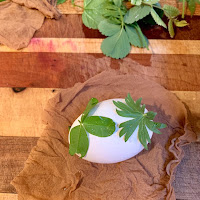













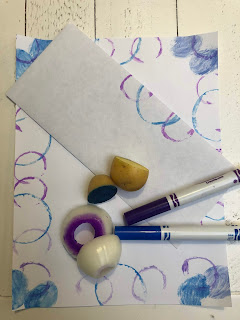























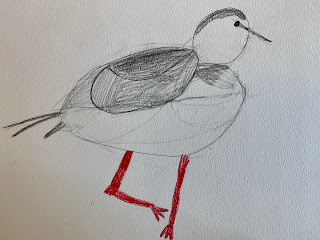

















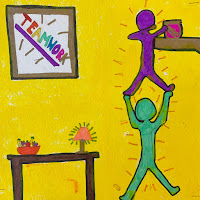







amazing!!! i wish could go back school!
ReplyDeletei miss being in art class!
ReplyDeleteWonderful for your success because your Blogspot is amazing and speech less excellent information and meaning full article on your every post its helpful to every student who want showing project in the collage schools and many institutes of submitting.
Your logger information like makeup and computer and typing and shorthand course best skills who want successful life and bride future. I love hope you will continue posting same like that and again thanks for thanks for online sharing beautiful experiences.
best computer institute in delhi NCR
, Best Fine art Institute in Delhi NCR,
Boutique Management with Cutting & Tailoring in Delhi NCR.
Its best way for successfully life and along with read your blogger material content amazing usefully. open sum information on googles about education courses who want join best institute in Delhi for with prefect skills. Show your blogger really excellent article when I love read its very energetic super exiting. Long time searching this type of article for my institute blogs now ended thanks again for sharing online information about education and hight level of skills.
ReplyDeletebest computer institute in delhi NCR
, Best Fine art Institute in Delhi NCR,
Boutique Management with Cutting & Tailoring in Delhi NCR.